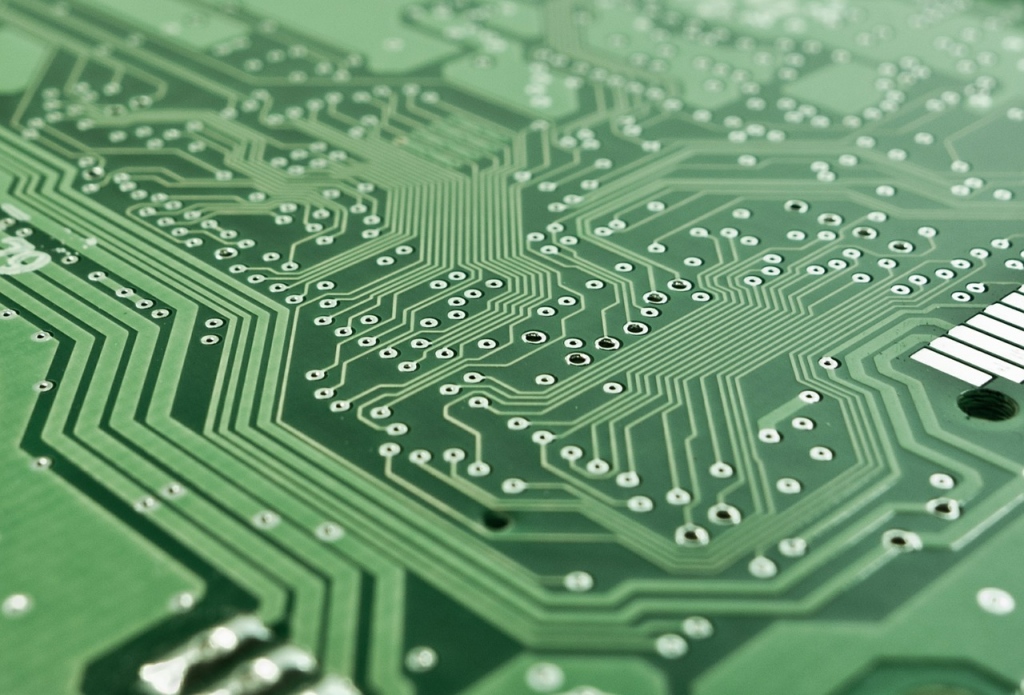Flex PCB or Flex circuit is a type of circuit board that is made up of thin flexible insulating polymer film having conductive circuit pattern.PCB means “printed circuit board” and is commonly used to portray inflexible printed hardware. Most of the modern electronic gadgets and equipment use the flex technology in their designs to provide interconnects in construction.
Similar type of components might be used for fabrication on these flexible electronic circuits as on printed circuit board, yet permitting the board to comply with an ideal shape (flex) during its application.
Types of Flexible PCB:
Single-Sided Flex:
This is the essential flex circuit and involves solo sheet of metal follows on either side of dielectric layer known as polyimide or polymer. It is utilized as a protection from ecological degradation
Double-Sided Flex:
It comprises of two conductive sheets on each side of the dielectric. For electric associations holes are made between these layers. Track your design requirements according to user will and comfort choose copper plated system with the management of gaps.
Multi-layer flex:
Multi-Layer flex circuits have a few copper layers isolated by dielectric layers. The metal layers are again associated by through gaps. There are progressively complex interconnections, layer configuration surface mounting.
Rigid flex:
A half and half mix of hardboard and adaptable circuits. They are to some degree both rigid and adaptable and due its flexibility they can be collapsed and constantly flexed while keeping up the state of regions that need additional help. The circuits are normally multi-layered and are included adaptable circuit substrates got together with unbending sheets. The adaptable layers are covered inside and totally enter the inflexible areas of the PCB.
Benefits of Flexible PCB:
- Minimum space requirement:
It only requires 10% of the space and weight as compared to standard circuit board. Offering more noteworthy establishment and bundling opportunity. The inalienable adaptability additionally allows more tightly twist capacities.
- Extended reliability:
This flex PCB requires less interconnections, which means less contact pleats, connectors, and patch joints. Adaptable PCB board presented different potential sources to overcome the failure issue the way it helps to improve quality.
- Extraordinary capabilities:
The adaptable printed circuits sheets are good with basically any kind of connector or segment and functions admirably with alternatives, for example, ZIP connectors. Their performance is perfect even in outrageous temperatures and most important thing it offer better resistance than radioactivity and synthetic compounds.
- Cheap:
Cost-reduction points of interest of Flexible PCBs incorporate decreased material and bundling requests, lower parts substitution expenses and get together mistakes that could bring about the requirement for fixes.
- High Temperature Applications
Polyimide also known as Flex circuits materials throw heat with maximum speed as compared to dielectric materials important preference is adaptability. It can be used under outrageous temperature conditions up to -200 to 400 C. It also offers superb radiations and UV presentation obstruction
Materials Used in Flex Circuits:
- Conductors
Conductors are the most important component used in Flex Circuit used for the uninterruptable flow of current through the material. Most common element used as a conductor is Copper along with aluminum, carbon, silver ink etc.
- Adhesives
This is the binding component used in PCB. It is mostly used according to the need for example the need of user or the thickness of conductor. Epoxy, acrylic, and PSAs are some of the adhesives used. Some of the PCBs are built without adhesive.
- Insulators
Insulators are utilized to isolate electrical conveyors without leading flow themselves. They are additionally utilized as support. Some normal protectors incorporate polyamide, polyester, weld veil, polyethylene naphthalene, and polyethylene terephthalate.
- Finishes
Finishes are made to shield the metal surface from oxidation. The last completion relies upon the use of the circuit. Some normal completions incorporate bind, tin, inundation in nickel or gold, silver, carbon, and so on.
Applications of Flex Circuits:
- This advanced technology is used for early detection of stroke and other health events through MRI. Adaptable hardware progresses give basic quick sweep investigation, expanded machine development elements, and step-change picture goals
- Down-opening oil and gas estimation depend on adaptable hardware to gauge and procedure data extricated a large number of feet underneath the world’s surface.
- Smaller than usual cameras driven by ultra-flimsy flex circuits are gulped by patients and empower doctors to diminish analytic expenses by giving continuous gastrointestinal pictures.
- Motor support units and automated stopping device frameworks in vehicles use polyimide hardware to give weight and cost reserve funds over conventional wiring saddles while withstanding under-hood situations.
- Inflexible flex printed circuit sheets (PCBs) are created with various layers you can check the technology from here www.pcbonline.com/PCB-FAB/Flexible-PCBs and in circuit designs down to 0.001″ dividing, driving numerous parts of modern military airplane, ships and satellites.
- Cell phones utilize 3-D radio wires and progressed optical drivers to give clear recordings while additionally scattering heat.
Bottom line
Conductive circuit pattern of Flex PCB helps to work with modern latest tools and gadgets especially flex based equipment. Different benefits are related to the flex circuits like flexibility, maintenance of density, and weight management. Conclusively flex circuits are based on latest technology they can replace single or other normal circuits due to its traditional assemblies.
